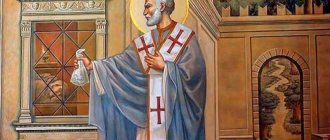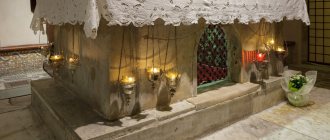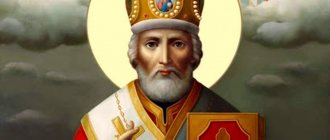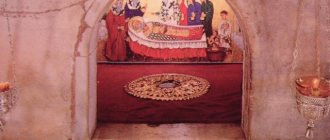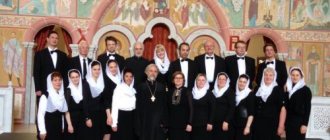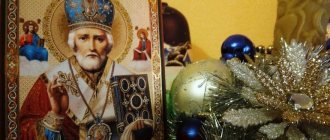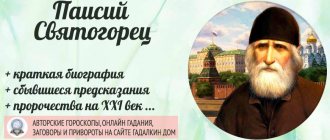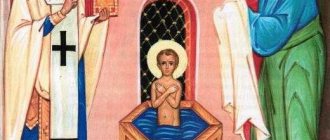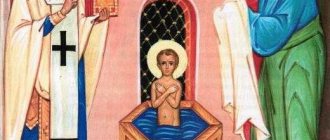The ancient city of Demre Mira can truly be called the pearl of Turkey. This unique area, which has preserved the great buildings of antiquity and reflects the rich history of the country, is undoubtedly popular among travelers. In addition, the most valuable Christian monument is located here - the Church of St. Nicholas. Therefore, if you are going on holiday to Turkey, be sure to add Demre Mira to your list of must-see attractions. Well, what kind of city is this and how to get to it, the information from our article will tell you.
City of Demre
Demre is a city in the province of Antalya, located in southwestern Turkey on the Mediterranean coast. Known in ancient times as Myra, it is a popular pilgrimage site thanks to the tomb of St. Nicholas the Wonderworker (although the saint's relics now rest in Bari). Demre is a major agricultural center whose economy, before the tourism boom, was based on the cultivation of fruits and vegetables in numerous greenhouses, but thanks to its rich history, the city has become a real tourism center. In addition to the ancient Christian basilica, there are the ruins of Myra, which are considered one of the most impressive and well-preserved ancient ruins in Turkey, as well as the striking ruins of half-sunken ancient settlements on the island of Kekova and the imposing ancient citadel of Simena.
- Geography and climate
- Tourist information
- Story
- How to get there
- Attractions
- Video
- Map
- Comments
Russian celebration traditions
In Rus', the celebration in honor of the transfer of the relics of St. Nicholas the Wonderworker was approved by the church almost immediately after this event itself - in the last years of the 11th century. The day of the saint’s Assumption in December was called “Nicholas the Winter,” and the day of the transfer of the relics was called “Nicholas the Summer.” The veneration of Nicholas the Wonderworker, or Nicholas the Pleasant, was very widespread; he was addressed as the merciful intercessor and helper of all sailors and travelers, merchants, innocently convicted or slandered, children, girls who had not yet settled their destiny, and in general - all those who need luck as they are in a risky situation. In the old days, children often did not live to adulthood, and the fate of a girl could easily turn in the most unfavorable direction if she was not lucky enough to marry a good man. Sailors can drown at any moment, and merchants can go bankrupt. In addition to them, horses and all those associated with them enjoyed the patronage of the saint.
For the first time, horses on St. Nicholas Letny were driven out to free grazing, put into a herd and entrusted to the care of grooms, who were selected from among the unmarried boys of the village. A prayer service was held, during which one could ask St. Nicholas to look after the cattle and ward off wolves and illnesses from them. The grooms were generously treated, and after sunset they went out into the night, during which they held a feast. Because of this, St. Nicholas of the Summer was considered a kind of men's holiday, when you can joke and have fun, dance in circles with girls and not especially try to maintain a pious and Lenten appearance. However, it was forbidden to swear and fight on this day, and for fraud in trade matters there was an inevitable punishment from an angry saint. For this reason, transactions on Nicholas Day were considered the safest, and promises were considered reliable. Another prohibition concerned laziness and idleness. The holiday was a holiday, but it fell during the sowing season, when every working hand counts. St. Nicholas is pleased with manifestations of mercy, first of all, towards travelers, strangers and children. If on the day dedicated to his memory you do a good deed and help someone who needs it, you can have no doubt about the saint’s favor.
News in the world of technology
In the Orthodox world, Nicholas the Wonderworker is a significant figure. Many holidays are dedicated to this saint, and on May 22, 2022, believers will celebrate the day of the transfer of his relics. On this day, believers pray to gain the protection and patronage of St. Nicholas.
It is not by chance that Saint Nicholas is called the Wonderworker. More than once, the sincere prayers of believers addressed to the saint helped to cope with difficulties, be healed of illnesses and receive support in difficult times. Experts from the website Denisjurin.ru recommend getting acquainted with what exactly needs to be done on the day of the holiday in order to receive support from above on May 22. It is on this day, according to legend, that Nicholas the Wonderworker descends to earth to give his protection to everyone who needs support.
St. Nicholas Day: what to do on May 22
Saturday will be special - at this time, believers remember how the relics of St. Nicholas the Wonderworker were transferred from Greece to Italy, and some pilgrims will travel to touch the shrine. Services will be held in each church where believers will be able to offer general and private prayers, touch the holy face and copies of the icon.
The clergy remind us that the holiday is not a time for selfishness and anger, so requests should begin with gratitude to the saint for his help. After this, they tell Nikolai about their difficulties and humbly ask for help in difficult matters and life circumstances.
On the day of the holiday, it is customary to help others. Good deeds cleanse souls and allow you to attract positive changes in life, avoid troubles and drive away troubles from yourself and your families.
They also pray to Saint Nicholas the Wonderworker for children, whose patron he is. On the day of the holiday, parents will be able to turn to him for support in order to protect the younger generation from troubles, help them pass the necessary exams and easily enter their chosen educational institutions.
Where are the relics of St. Nicholas the Wonderworker stored?
Pilgrims visit the town of Bari, which is located in Italy. It is there, in the Cathedral of the same name, that the relics of St. Nicholas rest. Some of the relics are located in Venice, on the island of Lido. For those who cannot go on such a long journey, the clergy remind that particles of holy relics can be visited in several Moscow churches.
Anyone can venerate and touch the relics, but for this it is important to follow several rules:
- approach the shrine with bright thoughts and sincere faith that help will come;
- pray silently, calling for help;
- they bow before the relics and make the sign of the cross;
- Having touched the relics, they ask for the most necessary things, not forgetting the words of gratitude.
May 22 was also popularly called the Day of St. Nicholas the Warm and the Day of St. Nicholas the Wonderworker. This saint was very loved and revered in Rus'. He was considered the protector of travelers and sailors, as well as married couples. In addition, they believed that the Wonderworker especially favored young children and prevented fires. Previously, on May 22, everyone tried to give and feed the poor, so that they themselves would not need anything throughout the year.
They tried not to swim in the river until May 22, as this was considered a great sin.
And on the day of St. Nicholas of Spring, they “ordered” meadows - this was done with the help of twigs and branches, which were stuck into the ground on May 22, so that it was clear: cattle could not be grazed here.
Nicholas the Wonderworker
Saint Nicholas, also known as Nicholas the Wonderworker, Nicholas the Pleasant and St. Nicholas, is revered in Christianity as a miracle worker. In the East he is considered the patron saint of travelers, prisoners and orphans, and in the West - primarily of children. Nicholas the Pleasant was one of the most revered, and according to many versions, the most revered Christian saint among the Eastern Slavs.
In the folk Christian calendar of the Eastern Slavs there are two holidays, each of which is sometimes called “St. Nicholas Day”. One of them, St. Nicholas the Winter, is celebrated on December 19, the day of the saint’s death, and corresponds to the Day of St. Nicholas celebrated by all Christians. The second holiday is called Nikola Spring or Nikola Summer. It is celebrated in memory of the transfer of the relics of St. Nicholas from Myra in Lycia to Bari in 1087.
It is believed that in the minds of the Slavs, Nicholas the Wonderworker was associated with the epic hero, the heroic plowman Mikula Selyaninovich. Nikola Veshny goes back, among other things, to the pre-Christian holiday of the Mother of the Raw Earth. This assumption is supported by another “folk” name for the holiday, “Mikula with food.” The name Mikula is a folk form of the name Nikolai.
May 22 – Customs of the day
On St. Nicholas the Great, it was customary to present Nicholas the Pleasant with eggs painted red, yellow, greenish, or scrambled eggs. In order to avoid drought and hail in the summer, on St. Nicholas Day it was customary for the eastern and southern Slavs to organize religious processions in the fields and prayer services at wells, accompanied by petitions for rain. It was customary for horse owners and livestock owners in general to carry out various protective rituals on St. Nicholas Day to protect animals from predators and other harms. In some places, so-called “Nikolshchina” were organized - men’s gatherings. They honored shepherds and drovers. Since Nikolai Ugodnik was revered as the patron of fertility, the so-called “walks to life” were timed to coincide with his holiday.
Popular signs say that if an alder tree blooms on Nikola Veshny, then you can sow buckwheat. And if you can clearly hear frogs croaking in the swamps, then oats will be born.
Signs for May 22
- Is the morning foggy and humid? To improve your health and not get sick for a whole year, you need to wash your face with fresh dew.
- Frogs croak loudly at Nikola - to a good oat harvest.
- The alder has bloomed - buckwheat should be sown on May 22.
- It rains all day - for a cold and stormy summer.
- According to folk superstitions, on May 22, it was necessary to plant potatoes on this day so that they would grow large and tasty.
Name days are celebrated today by: Nikolai, Severin, Christopher, Akulina, Vasily, Gabriel, Dmitry, Joseph.
And May 22 is also celebrated...
- Day of the Transfer of the Relics of St. Nicholas the Wonderworker
- Toothpaste tube birthday
- May 22 - Birthday of Ethernet technology
- Day of the Heroic Whistle
- Founding day of the Tretyakov Gallery
- International Day for Biological Diversity
- International Goth Day
- All-Russian Swimming Pool Industry Day
- Vinaigrette day
- May 22 - National Vanilla Pudding Day - USA
- Abolition Day - Martinique
- Republic Day - Sri Lanka
- May 22 - Arbor Day - Guatemala, Ecuador
- Buy a Musical Instrument Day - USA
- National Unity Day - Yemen
- May 22 - National Maritime Day - USA
- National Sovereignty Day - Haiti
- Harvey Milk Day - USA
- May 22 - Name day for Nikolai, Christopher, Dmitry, Vasily
- Nikolin's day
More about the holidays here .
*All images and videos used are the property of their respective owners.
In the 11th century, the Greek Empire was in a difficult situation. The Turks ravaged cities, killing residents, desecrated shrines, and destroyed temples. In particular, Muslims sought to destroy the relics of St. Nicholas, who was already deeply revered by the entire Christian world.
Knowing this, many Christians wanted to save the great shrine, and in 1087, noble and Venetian merchants, having gone to Antioch for trade, decided to take the relics of St. Nicholas on the way back. The inhabitants of Bar were ahead of the Venetians and were the first to land in Myra and arrive at the place. They collected what they could and took it to their ship.
Upon arrival home, the good news spread throughout the city. The relics of the saint were solemnly transferred to the Church of St. Stephen, which is near the sea. This process was accompanied by numerous miraculous healings of the sick.
The event associated with the transfer of the relics of St. Nicholas caused an intensification and strengthening of the veneration of the Wonderworker, and was marked by the establishment of a special holiday. This day was immediately celebrated only by residents of the Italian city of Bar, and later in other countries of the Christian world.
The glory of the miracles performed by the Saint on land and at sea was widely known. Their inexhaustible power and abundance testify to the saint’s special gracious help to suffering humanity.
It is difficult to imagine a person who has not heard of St. Nicholas the Wonderworker. He is also revered by representatives of other religions. It is important for us, Orthodox people, to realize that miracles and the help of the saint are carried out by the grace of God, and not only by the will of St. Nicholas. When honoring him, it is important to understand that without the source Himself - God, all this would be impossible. After all, today you can often meet a person who wears an icon of the Saint and knows nothing about Christ Himself, does not wear a cross and is not interested in the essence of the Christian faith.
When praying to Nicholas the Wonderworker, we should first ask not for money and health, but for the strengthening of our good intentions, the strength to fulfill the commandments of Christ. And then everything will be provided for our needs: money, career, and success. But the first must be the desire to follow Christ, to serve one’s neighbor and God, to be a support and support for every person - only in this way can we be confident in the miraculous support and help of the Great Saint, whom the whole world knows and honors.
Today, Orthodox Christians celebrate a major church holiday - the transfer of the relics of St. Nicholas the Wonderworker from Myra in Lycia to Bari. Previously, people called this day “Nikola Veshny”. Surely every Russian, even those far from religion, will be able to recognize the icon of St. Nicholas. And probably in every Orthodox family in the “red corner”, next to the icons of the Savior and the Mother of God, there is also an image of the Miracle Worker of Myra, one of the most beloved saints among the people. After all, Saint Nicholas is the patron saint of travelers and sailors, a protector in dangers and in a variety of life trials. During his earthly life, the holy Wonderworker stopped storms, resurrected the dead, saved those unjustly convicted from execution, and helped the poor. And in the 21st century, he invariably responds to the requests of believers.
“It is symbolic that the day before, on May 21, two revered icons were brought to the St. John the Theological Cathedral: St. Nicholas, the World of Lycian Wonderworker, and the Holy Blessed Matrona of Moscow, with particles of their relics,” priests of the Saransk diocese told the Izvestia Mordovia journalist. – These shrines were delivered to Saransk with the blessing of Metropolitan Zinovy of Saransk and Mordovia. Now, due to the pandemic, believers cannot travel to Italy, to the city of Bari, to the relics of St. Nicholas. But now they can make a pilgrimage to the “old” cathedral to venerate the holy relics and the revered icon of St. Nicholas the Pleasant. The shrines will remain in Saransk until June 14. Access to them will be open daily, from 7 am to 7 pm, including during services.
The history of today's holiday is dramatic. The “transfer” of the relics of St. Nicholas from the city of Myra in Lycia (now a territory in southern Turkey) to the Italian city of Bari occurred in the 11th century. In fact, it was a robbery theft of relics! The situation in the world at that time was difficult. The lands of the Byzantine Empire, to which Myra Lycian belonged, were plundered by the Turks. And residents of several Italian port cities at once dreamed of capturing the relics of St. Nicholas the Wonderworker, the patron saint of sailors... “Pirate” luck smiled on the soldiers from Bari. Under the guise of merchants, they conducted reconnaissance in the Lycian Worlds. They were lucky: the city was empty, the local residents had gone to the mountains to escape the Turks. The Church of St. Nicholas was guarded by only four Greek monks. The Italians tied them up and began to torture them, interrogating them: where are the relics of the Wonderworker hidden? One of the robbers, the sailor Matteo, was able to discover the tomb of the saint. Having taken the relics, the icon of St. Nicholas and church valuables, the Italians hurried to their ship, and along the way they had to fight off the Greeks who had returned to the city. The robber sailors even took pity on the Lycians and returned the icon to them. But the holy relics were taken to Bari. Before the start of the pandemic, pilgrims from all over the world came to Italy.
Demre (Turkish: Demre) is a city and district in the province of Antalya. Located between Kemer and Fethiye, at the mouth of the Karachay River, in the northwest of Finike Bay, 44 km east of Kas. Until 2005 it was called Calais. The local population is 16,000 people.
The resort combines all the delights of a beach and sightseeing holiday. Moreover, the second is even more significant, since a few kilometers away are the remains of the ancient city of Myra, which was the capital of the Lycian Federation and one of the largest cities in the Mediterranean.
Demre has all the necessary infrastructure with hotels, restaurants, bars, shops, car rentals, travel agencies. It is the largest producer of tomatoes and citrus fruits in the region and they are very cheap here.
Geography and climate
Demre is located on the Teke Peninsula southwest of Antalya and east of Kas. The city is located on the warm Mediterranean coast and has a subtropical climate typical of southwestern Turkey with hot, dry summers and mild winters. The river of the same name flows through the city, in fact, in honor of which it received its modern name.
Beyond Demre are the Taurus Mountains, covered with dense forest. This mountain range extends along a curve and divides the Mediterranean region. The pass, which crosses the northern part of the Taurus Mountains, was the birthplace of the Apostle Paul. Demre is crossed by the Lycian Way, a hiking trail that then continues through the rocky mountains to the port city of Finike.
Neighborhood Demre
Working hours
You can visit the ancient city of Mira from 9:00 to 19:00.
I buy tickets
Near the entrance to the territory there is a small market with souvenirs, a couple of cafes, and freshly squeezed orange juice is sold everywhere.
Story
In ancient times, in the vicinity of modern Demre, there was a city of Myra, which was one of the six most important cities of ancient Lycia, along with Xanthos, Patara, Olympos, Pinara and Tlos. The first written evidence of the city dates back to the 2nd century BC, in which Myra appears as a member of the Lycian League. However, the city is believed to be much older, as the outer defensive wall dates back to the 5th century BC. and some tombs were also built at this time.
In the 4th century AD Mira was the capital of the Roman province of Lycia. During this period the city continued to develop. In the early Christian period, Myra became a popular pilgrimage site thanks to the tomb of St. Nicholas, who was born in nearby Patara and was elected bishop during the Diocletian persecution. Saint Nicholas died here in 350.
Saint Nicholas is considered one of the most revered Christian saints. He is also the prototype of Santa Claus.
Ruins of Myra
In the 6th century, a basilica was built around the tomb of St. Nicholas, but was destroyed during an Arab raid. The church was restored to its current form during the reign of Emperor Constantine IX. In 1087, Italian merchants broke into the tomb and stole the remains of St. Nicholas. The relics were transported to Bari, where the famous Church of San Nicola was built. During the Ottoman period, the church in Myra was abandoned. Its restoration began in the second half of the 19th century thanks to the participation of the Russian Emperor Alexander II and continued in modern times.
The world fell into decline during the Middle Ages. This was due to Arab raids and natural disasters such as earthquakes and floods. During the period of the Ottoman Empire, there was a small city called Kale, which was renamed Demre in 2005.
Icon shop
Before leaving the territory of the Church of St. Nicholas there is an icon shop. Photography is not allowed inside. I can’t say that this has always bothered me, but taking a photo here is quite problematic. The things inside are undeniably beautiful and expensive. Not like that though. Very beautiful and very expensive - that would be more accurate. For the most part, these are icons made of gold and silver inlaid with precious stones. If I had a completely extra 500 USD, or better yet a completely extra 2000 USD, I would buy myself something, but since... I don’t have these amounts; I got away with a magnet for $3))) The photo below shows an example of an icon made of precious metals with the image of St. Nicholas. Such icons can be bought in the icon shop near the church.
Did you like the article? Share it!
1
Attractions
Mira
Mira is considered one of the most beautiful ancient ruins in modern Turkey. This ancient city was one of the most powerful cities of the Lycian League and is famous for its beautifully preserved Roman-era amphitheater and rock-cut tombs. The ruins of Myra are no less impressive than the ruins of Perge and Aspendos.
Myra was named after the Miros (now Demre) river on which it was founded. The history of the city begins in antiquity, perhaps as early as the 5th century BC. The city flourished during the period of ancient Lycia and the Roman Empire, but gradually fell into decline in the earlier Middle Ages.
Amphitheater in Mira
The archaeological ruins of Myra include magnificent Lycian rock tombs, a well-preserved Roman theater seating around 6,500 people, an ancient temple, an agora and ancient port facilities.
Church of St. Nicholas
Behind the main square of Demre is the Church of St. Nicholas, probably the city's most famous landmark. It is a medieval domed basilica built on top of an earlier church that originally housed the tomb of a saint whose remains were later stolen by Italian traders. The church is a popular pilgrimage site and is a superb example of 11th century sacred architecture with frescoes and mosaics. During the Ottoman period, the basilica fell into disrepair. Nowadays, the ancient church has been restored and is a candidate to be added to the list of UNESCO World Heritage Sites.
It was with St. Nicholas that the myth of Santa Claus began. There are several different stories about the origin of this myth. The most common one tells of a poor layman (a resident of Mira) whose daughters could not marry because they were too poor to afford a dowry. Saint Nicholas found out about this and entered this man’s house at night, leaving each girl a bag of gold.
Kekova
Kekova is a small island near Demre, which is one of the most beautiful places in Turkey, presenting a striking combination of picturesque nature, turquoise sea and ancient history. The island is best known for being home to the partially sunken ruins of Dolchishte, an ancient city that was destroyed by an earthquake in the 2nd century. Restored and still thriving during the Byzantine Empire, it was finally abandoned after the Arab invasions.
Kekova
The most interesting ruins are located in the northern part of Kekova, directly opposite the village of Kaleköy. Here you can see numerous fragments of ancient buildings from the times of ancient Lycia to Byzantium, stone Lycian tombs immersed in water, and even fragments of amphorae.
Swimming and diving in the vicinity of the ruins of the ancient city is prohibited.
Simena
Kaleköy is an ancient Greek fishing village located opposite the northern side of the island of Kekova. This is one of the rare places in Turkey that is on land, but can only be reached by boat. The main attraction of Kaleköy is Simena Castle, which resembles an eagle's nest and dates back to the 4th century BC.
Simena
The castle is located on top of a hill and is well preserved. It was built on the foundations of an earlier ancient citadel and offers magnificent views. Beneath the fortifications is the smallest Roman amphitheater in Turkey, with a capacity of only 300 people.
To the west of the ancient citadel is a necropolis containing mainly Roman sarcophagi built in the Lycian style. Beneath the castle is the village itself, with a charming boat dock, off the shore of which are the sunken ruins of Roman baths dating from the reign of Emperor Titus.
Ancient tombs in the vicinity of Simena
Ucagiz is another small and beautiful village located two kilometers west of Kalekoy. In its harbor you can see Lycian rock tombs. To the east of the village, the ruins of an ancient city begin, including a hilltop castle, a rock-hewn pier, and several sarcophagi.
Andriake
Andriake is an ancient city and port of Myra that flourished during the Roman period (especially during the reign of Emperor Hadrian). The city fell into disrepair after the bay silted up. Here you can see fragments of a trading agora and the ruins of a large granary.
We recommend watching:
Excursions - sightseeing, thematic, tickets to museumsHotels - map, special offers, selections
Main shrine
In one of the side aisles in the church there is a sarcophagus in which the archbishop was buried many centuries ago. Now it is empty - some of the relics remain in the city of Bari, and some are kept in Anatolia. But the sarcophagus itself is considered authentic.
On its marble lid there is a sculptural composition: a man and a woman. But it’s not easy to see her in a gloomy room. It can be seen that it was preserved in very mediocre condition.
It seems strange that the bas-reliefs do not carry any religious meaning. However, it is worth considering that at that time it was the custom to bury people in ancient tombs, which were simply taken from the pagan cemetery.
The side surface of the marble sarcophagus is broken. Apparently, when the holy relics were stolen, a decision was made to break the thinner partition. Perhaps it was more difficult to open the upper massive lid of the tomb.
Now the Christian shrine is fenced with tall glass, which believers touch. They also attach purchased icons and candles to it. For some reason I remember that when I was in this place several years ago, there was no protective glass, and we touched directly to the sarcophagus itself.
Today you can consecrate all the shrines under the tomb. There are small depressions on the floor under the sarcophagus, where you can lower your hand with the icon and even take a small piece of earth.
Tourists and pilgrims leave many notes behind the glass. However, I heard two opposing opinions on this matter from Russian guides. One suggested writing the names of loved ones or wishes and leaving a piece of paper for St. Nicholas. The other categorically did not recommend doing this. She said that every evening Turkish ministers sweep out all this paper garbage with a broom, without any pity for the Christian shrine.
Personality of the saint
Nikolai himself was born in the city of Patara. His father and mother - Feofan and Nonna - come from aristocrats. Nikolai's family was quite wealthy. But, despite the possibility of a luxurious existence, the saint’s parents were adherents of a godly Christian life. Until they were very old, they had no children, and only thanks to fervent prayers and the promise to dedicate a child to God, the Lord gave them the joy of being parents. At baptism the baby was named Nicholas, which means conquering people in Greek.
According to legend, from the first days the baby fasted on Wednesdays and Fridays, refusing mother's milk. In adolescence, the future saint showed a special disposition and ability for science. He was not interested in the empty amusements typical of his peers. Everything bad and sinful was alien to him. The young ascetic spent most of his time reading Holy Scripture and praying.
After the death of his parents, Nikolai became the heir to a large fortune. However, it did not bring joy similar to that which is present when communicating with God.
Scientific approach
Radiological studies confirmed the presence on the relics of signs indicating that the Holy Hierarch of Myra of Lycia was in dampness and cold for a long time... And also during radiological studies of the remains of the relics of St. Nicholas the Wonderworker (1953–1957) it was found that the iconographic image and the portrait image coincide with the appearance , reconstructed from a skull from a tomb in Bari. The miracle worker's height was 167 cm.
At a fairly old age (about 80 years old), Nicholas the Wonderworker went to the Lord. According to the old style, this day fell on December 6th. And in a new way - this is 19. The temple in Myra still exists today, but the Turkish authorities allow services to be performed only once a year: December 19th.
How to get to Demre (Myra and the Church of St. Nicholas the Wonderworker)
Getting to Demre is not difficult from the cities of Antalya and Kas, as well as other cities located on the D400 highway between Antalya and Kas (Finike, Kemer, Tekirova, Olympos and Cirali, etc.). If you want to get to Demre (Mira) from Fethiye, you will have to change trains in Kas, and from Alanya - in Antalya.
There is also a direct option to get to Demre from Fethiye by bus Fethiye - Antalya by Batı Antalya. BUT: firstly, you need a long route, which goes along the D400 highway. The short route Antalya - Fethiye via Korkuteli will not work. Secondly, the bus does not call at Demre, but passes along the D400 highway, which runs a little away from the city. You will still have to get to the center of Demre.
From Antalya you can get to Demre from the bus station (otogar) from the local routes terminal. Buses and dolmus to Demre from Antalya run every half hour or hour depending on the time of day from 6.00. The journey takes 2.5 hours. There is no need to buy tickets in advance; you pay for the bus fare.
The bus station (otogar) in Demre is located in the city center (see map below)
Bus schedule Demre - Kas
Bus schedule Demre - Antalya
Priesthood
Having accepted the rank of priest, Saint Nicholas of Lycia, the Wonderworker, led an even more strict life as an ascetic. The archbishop wanted to do his good deeds secretly, as commanded in the Gospel. This act gave rise to a tradition in the Christian world in which children on Christmas morning find gifts secretly brought at night by Nicholas, who in the West is called Santa Claus.
Despite his high position, Presbyter Nicholas remained a model of humility, love and meekness. The Shepherd's clothing was simple, without any decoration. The saint's food was lean, and he took it once a day. The shepherd refused help and advice to anyone. During the time of the saint's ministry, there were persecutions against Christians. Nicholas, like many others, was tortured and imprisoned by order of Diocletian and Maximian.
